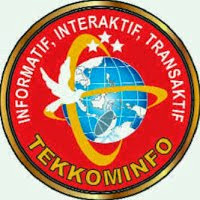I am currently building another repeater for our Police Departement. I've decided to document the procedure, and discuss repeaters and repeater building.
A repeater is a radio system that receives a radio signal on one frequency and repeats it on another frequency. Here's an example of what makes a repeater system worthwhile.
Our police department is located in a center of city Pekalongan. Most of our members have portable radios. It is hard for us to communicate with each other using the portables, since they have limited range even in the best of circumstances. The repeater at my shelter is a 30-watt repeater on a 60 meter tower. It has an effective range of ~20 km. When I talk on my portable through the repeater I effectively increase the range of my portable from 1-5 km to 20 km. Because the repeater is located on a tall tower it can receive better, also. It can pick up the traffic from the portables of the other members that normally couldn't be heard portable-to-portable.How do you build a repeater ?Another benefit of a repeater is that everybody can hear what everyone else is saying. This allows for better communications. Before our department got their repeater, a deputy in one part of the county had to relay their radio traffic through their dispatcher, who then had to relay it to another officer. Now both officers can speak directly, even if they are in opposite ends of the county.
The easiest way to get a repeater is to plop down the money and buy one. I'm poor, though, so I'll be building one out of discrete components. Actually, that's not a good argument. Repeaters aren't as expensive as they used to be. If I were buying new parts for the repeater I'm building it would probably cost me about the same. However, since I have old radios laying around I'll use these to build a repeater.
Here is an overview of a repeater system.
Antenna,
Receive radio,
Transmit radio.
Duplexer - Probably the least understood and sometimes forgotten component of a repeater system. A duplexer is a filter system that keeps the transmit and receive sides separate. Without a duplexer the transmitter side would jam the receiver, and the repeater wouldn't work.
There are two main types of duplexers: Band pass and band reject. A bandpass filter allows a certain BAND of frequencies to PASS while filtering out all other frequencies. A bandpass filter allows the receive frequency to pass to the receiver, and the transmit frequency to pass from the transmitter. Everything else gets filtered out. A band reject filter is almost the opposite. It REJECTS one BAND, and lets everything else pass. It allows everything but the transmit frequency to go the receiver, and vice versa. I prefer a bandpass filter. They provide better filtering for a repeater. However, they are usually more expensive. There is actually a third type of duplexer...bandpass-reject. It is a combination of the bandpass and band reject, and is used where the transmit and receive frequencies are very close together.
Duplexers normally look like long cans. The closer the receive and transmit frequencies are, the more cans you need to properly filter them, and the bigger around the cans will be. The bad part of that is more cans cost more money, and they eat up more of your transmit power and receive sensitivity.
Repeater controller - The controller is the brains of the repeater. It makes sure it receives the proper signal from the receiver, and then makes the transmitter transmit.
Wiring connections
The repeater controller needs certain signals from/to the radios to perform correctly.
COS - The COS signal tells the repeater controller that the receive radio is receiving a signal. The default source for a COS signal is the unmute for the speaker. However, some radios have a COS-type signal or a better source than the speaker unmute. You need to look at the radio schematic to determine this. Did I mention that electrical schematics for your components are vital?Receive audio - The receive audio signal is taken from the output of the discriminator. The discriminator is circuitry which converts the signal from the carrier that goes through the air back into normal audio. Once again, use the schematics to determine the discriminator location. The receive audio from this location contains the audio that we will hear (300 Hz to 3300 Hz) and the PL tone information (60 Hz to 255 Hz). The repeater controller filters the PL tone information and compares it to the expected PL tone. If it is correct it allows the receive audio to become transmit audio.
Transmit audio - The audio which is sent to the transmitter for rebroadcasting. The repeater controller will add Morse Code ID beeps or courtesy beeps to the transmit audio if programmed for those features. This line can usually be connected to the same audio line which comes from the microphone on the transmit radio.
PTT (push to talk) - This is the same function as keying the microphone, and is connected to the same wire.
CTCSS/DCS tone input - This is an optional input to the transmitter, and is only used if you're setting the repeater up as a community repeater or shared repeater*. This line is connected to where the transmit radio would normally add the CTCSS tone to the transmitting audio. This allows the repeater controller to inject the proper PL tone depending on the user of the shared repeater.




Post A Comment:
0 comments:
Post a Comment